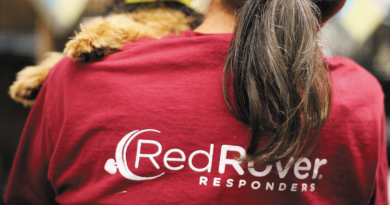FDA’s pay-to-play our way illegal pet food system – Truth about Pet Food
Millions of pounds of illegal pet foods are allowed to be sold to unknowing consumers each day. How can government regulatory authorities allow law to be violated? They are paid to.
When U.S. federal law says one thing: “The term “food” means (1) articles used for food or drink for man or other animals“…and “A food shall be deemed to be adulterated” (in part) “(5) if it is, in whole or in part, the product of a diseased animal or of an animal which has died otherwise than by slaughter”…
…but pet food government authorities enforce something completely different – “we do not believe that the use of diseased animals or animals that died otherwise than by slaughter to make animal food poses a safety concern and we intend to continue to exercise enforcement discretion where appropriate”…
…aren’t these government regulatory authorities violating their sworn duty “to place loyalty to the Constitution, laws and ethical principles“?
Yes, they are. So…if these government regulatory authorities are violating their duty, how does illegal pet food happen? How can billions of dollars of illegal pet food be sold each year with no law enforcement?
It happens through a complex system of government and private organizations.
The system: Pet food is regulated on a federal level by FDA and on a state level through each state’s Department of Agriculture. With federal and state laws specifically prohibiting pet food ingredients to be sourced from diseased animals and animals that have died other than slaughter, government pet food regulatory authorities need some assistance. That assistance comes from the private organization Association of American Feed Control Officials (AAFCO) and a regulatory system developed by FDA and AAFCO, the Animal Feed Regulatory Program Standards (AFRPS).
AAFCO writes the definitions of all pet food/animal feed ingredients. These ingredient definitions become accepted as law in each U.S. state – BUT, unlike all other laws, these legal definitions of ingredients are NOT published as state law for public review.
Example: chicken. The food item ‘chicken’ must abide by the federal laws The Poultry Products Inspection Act. All of these laws are public information, including all legal definitions. But pet food ‘chicken’ isn’t held to the federal laws of The Poultry Products Inspection Act. The private organization AAFCO provides pet food chicken it’s very own legal definition that doesn’t require it to be sourced from inspected and passed poultry (as the federal Poultry Products Inspection Act requires). In fact, AAFCO’s definition of chicken allows it to be sourced from condemned chicken or chicken bones (little to no meat).
Remember, AAFCO is a private organization…it can write the legal definitions anyway it wants. The tricky part comes with enforcement of this definition of chicken – since it is opposite of federal law.
With enforcement, FDA and AAFCO have worked out a system – a financial reward system to states that ignore federal and state law, and blindly follow the illegal pet food system; the Animal Feed Regulatory Program Standards.
Below is a map of states that FDA pays (via your tax dollars) to participate in the illegal pet food system.

As example of how much a state benefits from enforcing pet food regulations the way FDA wants them to (ignoring federal law), the state of California received from FDA $450,000.00 in 2015, $450,000.00 in 2016, $450,000.00 in 2017, $450,000.00 in 2018 and $450,000.00 in 2019.

California alone received more than $2 million dollars over 5 years from FDA by implementing FDA’s and AAFCO’s Animal Feed Regulatory Program Standards.
The 2020 Animal Feed Regulatory Program Standards requires states (in order to receive FDA funding) to: “The State PROGRAM administers an inspection program to determine compliance with ANIMAL FEED laws.” In other words, states receive money from FDA if they ignore federal laws and enforce AAFCO written laws. Such as: States receive FDA money IF they enforce AAFCO’s definition of chicken – and every other AAFCO definition – which doesn’t match federal definitions or legal requirements of food.
Federal law clearly and concisely puts pet food/animal food into the same regulatory category as human food, federal law clearly and concisely deems an illegal food is one that contains a diseased animal or animal that died other than slaughter. But, FDA doesn’t want it that way. FDA wants pet food/animal feed to have its own system of enforcement – allowing FDA’s Center for Veterinary Medicine (CVM) to decide how THEY want to regulate. They built a system of “enforcement discretion” that generously rewards those that ignore illegal pet food ingredients.
Condemned chicken in pet food isn’t illegal if they have their own definition that allows condemned chicken, right? Actually…it remains illegal. FDA using AAFCO to write definitions that conflict with federal law, and FDA using the Animal Feed Regulatory Program Standards to financially reward those that enforce those conflicting food definitions doesn’t make their system legal. It only makes for a good cover story for FDA to tell representatives in Congress when pet owners complain about illegal pet food. No one in Congress has ever bothered to take a deeper look into the illegal system of pet food regulation as many of us have asked them to do for years.
When will FDA stop writing their own rules? When will pet food be regulated as law requires it to be?
Wishing you and your pet(s) the best,
Susan Thixton
Pet Food Safety Advocate
TruthaboutPetFood.com
Association for Truth in Pet Food

Become a member of our pet food consumer Association. Association for Truth in Pet Food is a a stakeholder organization representing the voice of pet food consumers at AAFCO and with FDA. Your membership helps representatives attend meetings and voice consumer concerns with regulatory authorities. Click Here to learn more.
What’s in Your Pet’s Food?
Is your dog or cat eating risk ingredients? Chinese imports? Petsumer Report tells the ‘rest of the story’ on over 5,000 cat foods, dog foods, and pet treats. 30 Day Satisfaction Guarantee. www.PetsumerReport.com
Find Healthy Pet Foods in Your Area Click Here

The 2020 List
Susan’s List of trusted pet foods. Click Here to learn more.




